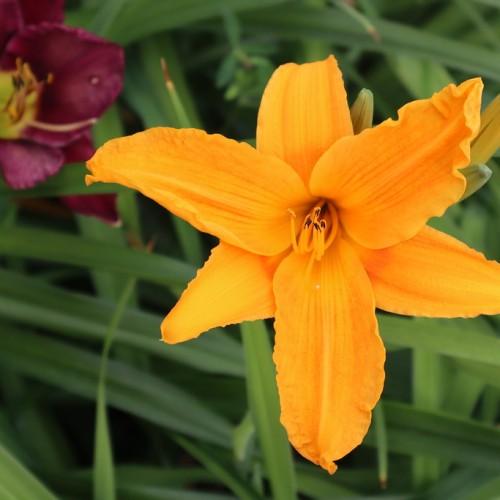
daylily
Hemerocallis 'VER00204' EVERYDAYLILY YELLOW PUNCH
Cycle:
Herbaceous Perennial
Watering:
Average
Hardiness Zone:
3 - 9
Flowers:
Flowers
Sun:
Full sun,part shade
Leaf:
Yes
Growth Rate:
High
Maintenance:
Low
Drought Tolerant:
Yes
Salt Tolerant:
Yes
Care Level:
Medium
watering
Daylily 'VER00204' Everydaylily Yellow Punch is a vigorous and easy to grow perennial. It is best to water daylilies deeply and infrequently, allowing the soil to dry out between watering sessions. Water when you see the soil starting to dry out. Check both the surface and the soil at root level to make sure all of the soil is moist but not oversaturated as too much water can lead to root rot and other issues. During the summer months, you may need to water once a week or more, depending on the climate where it’s planted. This can also depend on how hot and dry the summer months are, if it is growing in direct sun or partially shaded, and if it is in a container or in the ground. Soil type can also play a part, as sandy soil can dry out quickly, while clay soils may need less water. You should adjust your watering as necessary.
sunlight
The Daylily (Hemerocallis 'VER00204' EVERYDAYLILY YELLOW PUNCH) needs at least 6 hours of sunlight per day during the flowering season. It can tolerate some light afternoon shade, but should not be kept in full shade for the entire day. Newly planted Daylilies should be kept in partial shade while they adjust to their new environment; once established it can then start receiving the recommended amount of direct sunlight per day. Moreover, the plant may suffer from stunted growth or discolored or lack of blooms if it is not receiving enough sunlight.
pruning
Daylily should be pruned only in the summer, when it is actively growing and blooming. In general, light pruning should be done in early July, and a more thorough pruning should be done in late August or early September. The first step in pruning is to carefully inspect the foliage and root system. Dead or damaged stems should be removed, and any crowded and overgrown vines should be thinned. Stems that remain should be trimmed back to within a few inches of the previous year’s growth. This will encourage healthier growth and more profuse blooms. Daylily may also benefit from deadheading, or removing spent blooms throughout the season. Removing dead and wilted blooms will ensure the plant has the energy to continue to produce healthy blooms. Finally, after any pruning is done, the soil should be mulched around the plant to help retain moisture and discourage weeds from taking over.
